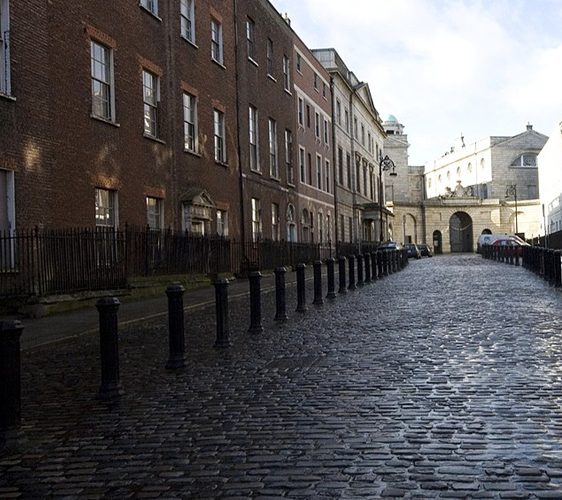Ideology has dominated the Irish housing sector since the outset. There is no period in history, even during times of relatively robust state house-building, that could be said to have had a stable or working housing system. From tenements to failed housing experiments to bubbles, the Irish story of housing provision is littered with errors.
In this article I outline a proposal for how the CPI should think about housing, and explain why we may need to think about our terminology.
The existing Irish housing model operates in what is called a “differential rental” system, where social housing is financed by tenants paying a percentage of their income in rent to the local council. This model has large funding shortfalls, because of the fact that it is only a safety net and is not intended to be an alternative to the provision of private housing. It can never be self-financing, since it is only ever a house of last resort, and there are no well-off people seeking these houses from which higher rents can be leveraged.
The well-off pay for these housing differences indirectly, through general taxation, which leads to housing costs being seen as a burden to be borne, and constantly cut by right-wing governments.
The rents are “differential” in two senses, in that the rents differ from person to person but also in that the private housing system is kept distinct, hermetically sealed from “contamination” by the public housing system.
The reason for this red line between private and public housing is that if the state is seen to interfere in the private housing market, undercutting it and forcing landlords out of the market because of the state’s increased scale, that is illegal state aid and would lead to fines under EU law.
These flaws have led to the counterproposal of a cost-rental system, where the costs of the building and maintenance of housing is pooled. Over the lifetime of the house the cost price of building, the largest cost of a home, is reduced as a total of the cost of servicing the debt used to finance the building of the home, because of inflation. This is called “maturation.” It is the maturation that allows cost-rental models to operate. Older buildings cost less, and this lower cost is what allows the relatively higher cost of new buildings to be subsidised.
These schemes are very easily self-financing, since the rents are literally the sum of the costs divided by the number of tenants. However, these schemes can lead to housing poverty, even among those who are in the social housing system. For this reason it is necessary to also have housing credits for those who are unemployed or on fixed incomes, to ensure that they can afford to live in the social housing system.
The increasing sums in the cost-rental collective coffers over time also give local authorities a financial clout that is separate from the central government. The administration of these vast reserves is perhaps an explanation of why it is popular among both policy wonks and some elected officials.
The tensions here seem obvious. The cost-rental model is not financed in a progressive way. It does not take into account ability to pay. For all the faults of the current differential-rental model, once you get a council house there is no housing poverty within the housing system: your rent is adjusted so that you have the ability to pay—the issue being that getting a council house is so difficult.
The issues with the differential model are that there just aren’t enough houses built, it is underfunded, aimed only to ever be social housing, and is prevented by EU rules from taking on the private rental market.
For this reason we need to come up with a new terminology for what the CPI’s demand is: publicly built and owned housing for all, with rents determined by ability to pay.
This is the tension that will bring our class into conflict with the landlord class and the EU (in its position as guarantor of rent-seeking capitalism). We need to take what is good from the differential-rental model, the lack of housing poverty—but it needs to be expanded to be a housing solution for all who live in Ireland.
In an ideal world, if a public housing system for all was implemented, the rents leveraged on high earners would subsidise the lower rents given to the unwaged, pensioners, and the precarious. This would be supplemented by taxation where needed. The explicit aim of such a housing policy would be to provide a public home for everyone. In this way it would cease to be “differential” in the second sense outlined, in that the aim is to squeeze the private system out of existence.
In 1945 the British state established the National Health Service. Posters at that time read: “Your new National Health Service begins on 5th July. What is it? How do you get it? It will provide you with all medical, dental and nursing care. Everyone—rich or poor, man, woman or child—can use any or part of it. There are no charges, except for a few special items. There are no insurance qualifications. But it is not a ‘Charity.’ You are all paying for it, mainly as taxpayers, and it will relieve your money worries in the time of illness.”
It is this universalist principle that we need to bring front and centre. Public housing is not charity. It is the provision of a public need in the pursuit of public good, by the public.
The cost-rental model is economic appeasement. It is about depressing the housing market through the use of non-profit aims. But it is not a challenge to the private housing market. It dovetails into the private housing market. It is, by design, a unitary system that attempts to improve standards and reduce costs in the housing system as a whole through market mechanisms.
With respect to the good people in many of the voluntary groups who have done good work in researching this area, as the Communist Party we should be aiming for better.
In It’s a Wonderful Life (1946) George Bailey runs a family-owned building society that pools money together to build nice houses for his community. In the alternative reality, where he doesn’t exist, we instead get Potterville, where slums run rampant.
While cost-rental systems might be better than Potterville, we must keep one thing in mind. It’s a Wonderful Life was a Republican Party vehicle for warning against the excesses of capitalism; instead they preferred the compassionate face of localism and the petit-bourgeois. We should fight against both.






